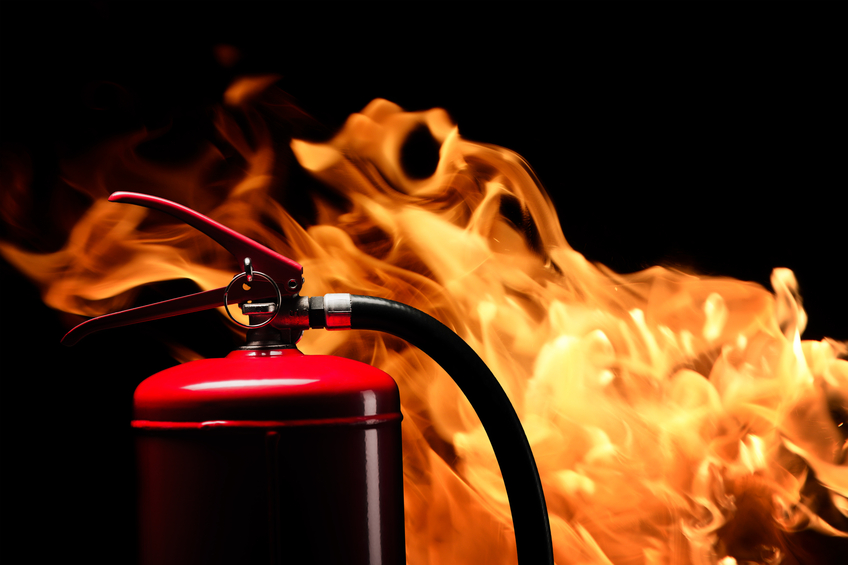At the U.S. Postal Service’s (USPS) vehicle maintenance facility in St. Louis, a minor grease fire erupted in a wheel hub on July 3, 2016. Workers trying to put out the small blaze ran into a problem: The first five fire extinguishers they tried to use were not charged.
 |
Fortunately, they found a charged extinguisher and kept the fire from spreading—but the incident brought OSHA to the facility, which was ultimately cited for one repeat and two serious violations of OSHA’s standards.
OSHA has proposed $87,297 in penalties against the USPS as a result of the fire. Are you making any of these potentially costly mistakes in your workplace?
Failure to Maintain Charged and Operable Fire Extinguishers
If you have fire extinguishers in your workplace—whether or not they are required— you are responsible for ensuring that they:
Are maintained in a fully charged and operable condition. According to OSHA, a simple check of the viewing gauge on the extinguishers at the USPS facility would have shown that they were not charged. OSHA recommends at least a monthly inspection for all fire extinguishers that checks whether:
- Each extinguisher is in its designated place, clearly visible, and not blocked by equipment, coats, or other objects that could interfere with access during an emergency.
- The nameplate with operating instructions is legible and facing outward.
- The pressure gauge shows that the extinguisher is fully charged (the needle should be in the green zone).
- The pin and tamper seal are intact.
- The extinguisher is in good condition and showing no signs of physical damage, corrosion, or leakage.
- All dry powder extinguishers have been gently rocked top to bottom to make sure the powder is not packing.
Are kept in their designated places at all times except during use. Their “designated places” will be dictated by the type of fire that’s anticipated. A vehicle maintenance facility like the USPS worksite would most likely need “Class B” extinguishers, which must be located within 50 feet travel distance from any work area. To prevent fire extinguishers from being moved or damaged, they should be mounted on brackets or in wall cabinets with the carrying handle placed 3-1/2 to 5 feet above the floor. Larger fire extinguishers need to be mounted at lower heights with the carrying handle about 3 feet from the floor.
The workers at the facility were fortunate that the fire did not spread while they were looking for a working extinguisher—until the fire was put out, they were all at risk.
Failure to Train Workers on Fire Extinguisher Use
If you have fire extinguishers in the workplace, and workers are expected to use them, you must also provide training in the general principles of fire extinguisher use, and the hazards associated with incipient stage firefighting. The USPS facility also allegedly failed to do this.
It’s pretty simple. Workers need to know this basic procedure:
- Hold the extinguisher upright and stand 6 feet to 8 feet from the fire.
- Make sure there is a fire-free escape route open behind you in case you can’t extinguish the fire and you need to evacuate.
- Then remember “PASS”:
- Pull the pin (on some extinguishers, you have to press a lever).
- Aim at the base of the fire.
- Squeeze the handle to release the extinguishing agent.
- Sweep back and forth until the fire goes out.
Tomorrow we’ll look at two other fire-control related problems that were identified at the USPS facility—and how to correct them.
